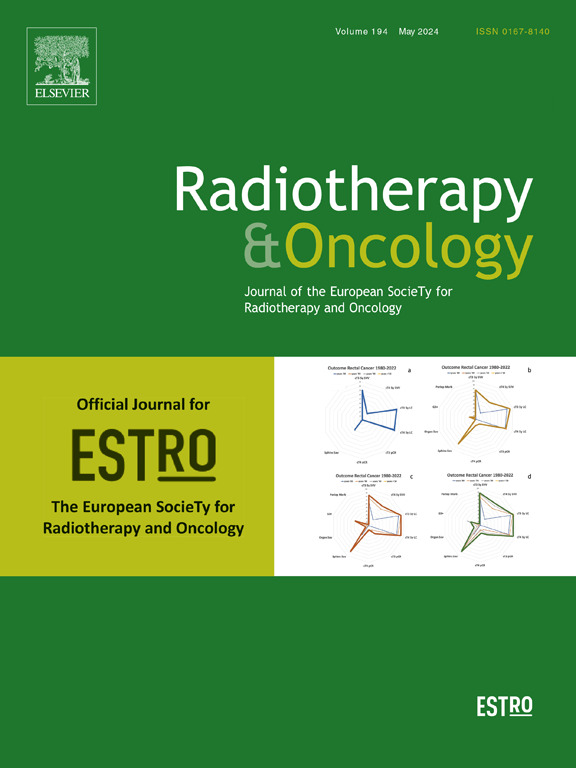The fractionation effect on proton RBE in a late normal tissue damage model in vivo
IF 4.9
1区 医学
Q1 ONCOLOGY
引用次数: 0
Abstract
Background and purpose
A constant relative biological effectiveness (RBE) of 1.1 is used in clinical proton therapy (PT) to convert prescribed photon doses into isoeffective proton doses. However, the RBE is not constant; it is a dynamic parameter highly influenced by factors such as linear energy transfer, tissue type, biological endpoint, and dose/fraction. Preclinical in vivo proton RBE studies using fractionated doses and late damage endpoints are almost nonexistent. The aim is to test the hypotheses that the RBE varies between single and fractionated doses and that the late damage development differs between proton and photon irradiation using a 6 MV linac as a reference modality in a murine leg model.
Materials and methods
The right hindlimb of unanesthetized mice was irradiated with single or four fractions of protons or 6 MV photons. Over one year after treatment, the mice were analyzed every fourteenth day using a joint contracture assay to investigate severe radiation-induced late damage.
Results
The results indicated a higher RBE for severe late damage endpoint of 1.25 ± 0.06 (1.13–1.36) for fractionated doses than single doses, exhibiting an RBE of 1.16 ± 0.08 (1.00–1.31). The onset of late damage is earlier for protons than photons for doses higher than 47 Gy and fractionated doses above 50 Gy (12.5 Gy per fraction).
Conclusion
The findings demonstrate that fractionated doses enhance the RBE for a late damage endpoint and lead to an earlier onset of severe late effects than its photon counterpart in vivo.
求助全文
约1分钟内获得全文
求助全文
来源期刊

Radiotherapy and Oncology
医学-核医学
CiteScore
10.30
自引率
10.50%
发文量
2445
审稿时长
45 days
期刊介绍:
Radiotherapy and Oncology publishes papers describing original research as well as review articles. It covers areas of interest relating to radiation oncology. This includes: clinical radiotherapy, combined modality treatment, translational studies, epidemiological outcomes, imaging, dosimetry, and radiation therapy planning, experimental work in radiobiology, chemobiology, hyperthermia and tumour biology, as well as data science in radiation oncology and physics aspects relevant to oncology.Papers on more general aspects of interest to the radiation oncologist including chemotherapy, surgery and immunology are also published.
 求助内容:
求助内容: 应助结果提醒方式:
应助结果提醒方式:


